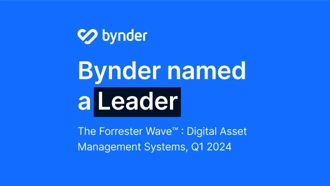What is brand messaging?
Brand messaging encompasses all of your company’s communications with your audience.
It includes:
- Your core messages, such as your mission and vision
- The language you use to get those main messages across
- Your brand story
- Your signature brand voice and personality
- Your unique value proposition and brand pillars
Unlike marketing messages — which are more directly promotional and can change depending on, for example, your target audience’s demographic — brand messaging is consistent.
How to create a brand messaging framework
Here’s a simple look at how to start defining and developing your messaging:
1. Start with discovery
During the discovery phase, you should consider:
- Reviewing internal and external business assets (from brochures and websites to company-wide memos and sales decks).
- Interviewing key stakeholders to understand how they think and talk about your organization, its customers, its values, and what they love and hate about any current brand messaging.
- Reviewing available data and customer feedback to understand what customers find compelling and how they understand the brand story.
- Researching what competitors are doing with their brand messaging in the marketplace.
- Sitting in on a sales pitch or call, noting key selling points, customer questions, hesitations, and storyline.
- Reviewing outside assets (such as blog articles, video content, etc.) written by members of your target audience to get their perspective on aspects such as their likes, dislikes, pain points, and so on.
While you’re sifting through the assets and interviews, don’t forget to take tons of notes and highlight the important points, recurring themes, and critical language along the way.
2. Use a brand messaging development template
The next stage of the process involves creating a basic outline of your product, service, or business story:
- Try to keep it to no more than five key points. These will be your brand pillars.
- If you’re unsure which messages are key to your brand, focus on the what, why, and how:
- What do you do?
- Why does it matter?
- How do you get it done?
- Who cares?
- How do your users or customers benefit?
Think about the differentiators too. What sets your product, service, or brand apart from competitors or alternatives?
Answering the above questions should help you to start crafting your:
- Mission statement — The purpose of your business and what you hope to accomplish.
- Vision statement — The larger impact you hope to make through your work.
- Brand promise — A customer-facing statement that describes the value your business offers to users or customers.
- Brand positioning statement — An overview of the category your business competes in, what you do, and how you solve your target audience’s problems in a different or better way than competitors.
3. Define how you’ll communicate your message
The next task is to figure out how to communicate your brand messaging to audience members.
This stage of the process should concentrate on:
- Honing the messages you've drafted
- Ensuring the tone of voice fits your brand personality
- Matching language choices to the way your customers think about and talk to you
A helpful exercise related to this is to write out your key messages, and then craft a sample sentence or paragraph which explains each message. You could also list any key phrases relevant to each message.
This will help your stakeholders understand the context and what a message might look like when it's used. It can also act as an aid for your writers so that they can better understand how to communicate your messaging.


